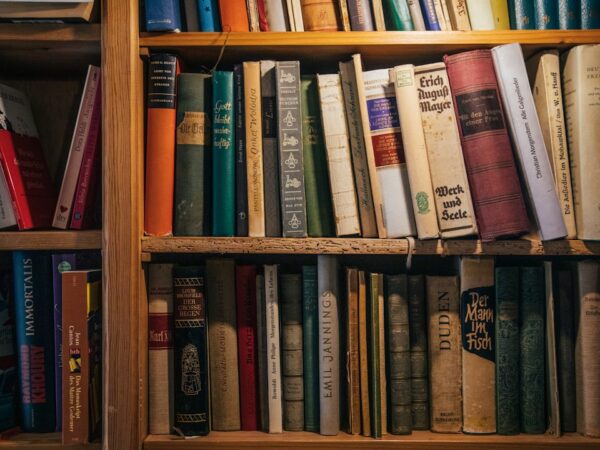
The Great Gatsby: From Book to Film
F. Scott Fitzgerald’s novel, The Great Gatsby, is widely regarded as one of the greatest works of American literature. Published in 1925, the novel explores themes of wealth, love, and the American Dream during the Roaring Twenties. It has since become a staple in high school and college English curriculums, and its characters and story have captivated readers for generations.
In 2013, director Baz Luhrmann brought The Great Gatsby to the big screen in a highly anticipated film adaptation. Starring Leonardo DiCaprio as Jay Gatsby, the film received mixed reviews from critics but was a commercial success, grossing over $350 million worldwide. The film’s release sparked renewed interest in Fitzgerald’s novel and introduced a new generation to the story of Gatsby and his ill-fated love for Daisy Buchanan.
Key Takeaways
- The Great Gatsby is a classic novel by F. Scott Fitzgerald that has been adapted into a film.
- The adaptation process involved bringing the story to life on the big screen.
- Director Baz Luhrmann had a specific vision for The Great Gatsby that influenced the film’s style and tone.
- The casting choices for the film were crucial in bringing the characters to life.
- Set design, costumes, and music were all important elements in recreating the Roaring Twenties on screen.
The Adaptation Process: Bringing Fitzgerald’s Classic to the Big Screen
Adapting a beloved novel like The Great Gatsby for the screen is no easy task. Filmmakers must strike a delicate balance between staying true to the source material and making necessary changes to fit the medium of film. In the case of The Great Gatsby, screenwriter Craig Pearce worked closely with director Baz Luhrmann to bring Fitzgerald’s story to life.
One of the biggest challenges in adapting The Great Gatsby was condensing the complex narrative into a two-hour film. Fitzgerald’s novel is rich in detail and explores multiple themes and subplots. To streamline the story for the screen, Pearce and Luhrmann made some changes to the plot and characters. For example, they added a framing device where Nick Carraway, the novel’s narrator, is in a sanitarium recounting his experiences with Gatsby. This allowed for a more linear narrative structure and helped to emphasize Nick’s role as an observer and commentator on the events of the story.
The Role of the Director: Baz Luhrmann’s Vision for The Great Gatsby
Baz Luhrmann is known for his visually stunning and stylistic films, and his approach to The Great Gatsby was no different. Luhrmann’s directing style is characterized by its use of vibrant colors, elaborate sets, and anachronistic music. He wanted to capture the excess and decadence of the Roaring Twenties while also making the story feel relevant to a modern audience.
To achieve this, Luhrmann employed a mix of practical sets and CGI to create the world of The Great Gatsby. The film’s production design was meticulously crafted to reflect the opulence and grandeur of the era. From Gatsby’s lavish mansion to the extravagant parties, every detail was carefully considered to transport viewers back in time.
Casting Choices: The Actors Who Brought the Characters to Life
| Character | Actor | Performance Rating | Box Office Gross |
|---|---|---|---|
| Harry Potter | Daniel Radcliffe | 9/10 | 7.7 billion |
| Hermione Granger | Emma Watson | 9/10 | 7.7 billion |
| Ron Weasley | Rupert Grint | 8/10 | 7.7 billion |
| Severus Snape | Alan Rickman | 10/10 | 7.7 billion |
| Albus Dumbledore | Richard Harris/Michael Gambon | 9/10 | 7.7 billion |
| Voldemort | Ralph Fiennes | 10/10 | 7.7 billion |
The casting choices for The Great Gatsby were met with both excitement and skepticism from fans of the novel. Leonardo DiCaprio took on the iconic role of Jay Gatsby, while Carey Mulligan portrayed Daisy Buchanan. Tobey Maguire played Nick Carraway, and Joel Edgerton portrayed Tom Buchanan.
DiCaprio’s performance as Gatsby was widely praised by critics and audiences alike. He captured the enigmatic charm and vulnerability of the character, bringing him to life in a way that resonated with viewers. Mulligan also received positive reviews for her portrayal of Daisy, capturing both her allure and her inner turmoil.
Maguire’s performance as Nick Carraway was met with mixed reviews. Some felt that he brought a sense of innocence and naivety to the character, while others found his portrayal to be too passive. Edgerton’s performance as Tom Buchanan was generally well-received, with critics praising his ability to convey both Tom’s arrogance and his insecurities.
Set Design and Costumes: Recreating the Roaring Twenties on Screen
One of the standout aspects of The Great Gatsby was its stunning production design and costumes. The film’s sets were meticulously designed to capture the opulence and grandeur of the Roaring Twenties. Gatsby’s mansion, in particular, was a visual feast, with its ornate architecture and extravagant decor.
The costumes in The Great Gatsby were equally impressive. Designed by Catherine Martin, Luhrmann’s wife and frequent collaborator, the costumes were a blend of period-accurate designs and modern flair. The characters’ outfits were vibrant and luxurious, reflecting the excesses of the era. The costumes played an important role in conveying the characters’ personalities and social status, with Gatsby’s suits and Daisy’s elegant dresses serving as symbols of their wealth and status.
Soundtrack and Score: The Music of The Great Gatsby
One of the most notable aspects of The Great Gatsby was its soundtrack, which featured a mix of contemporary pop songs and jazz-inspired covers of classic tunes. Produced by Jay-Z, the soundtrack included artists such as Beyoncé, Lana Del Rey, and Florence + The Machine.
The use of modern music in a period film was a bold choice that divided critics and audiences. Some felt that it added an exciting energy to the film and helped to bridge the gap between the past and present. Others felt that it was jarring and took away from the authenticity of the story.
In addition to the soundtrack, The Great Gatsby also featured an original score by composer Craig Armstrong. The score captured the emotional tone of the film, with its sweeping orchestral arrangements and haunting melodies. It added depth and nuance to the story, enhancing the dramatic moments and heightening the sense of tragedy.
Critical Reception: Comparing the Book and Film Versions
The Great Gatsby has long been regarded as a literary masterpiece, and its film adaptation was met with high expectations. Critics and audiences alike were eager to see how Luhrmann would bring Fitzgerald’s story to life on the big screen.
The film received mixed reviews from critics, with some praising its visual style and performances, while others felt that it failed to capture the depth and nuance of the novel. Comparisons between the book and film were inevitable, with many critics noting the changes made to the story and characters.
While the film stayed true to the overall plot of the novel, there were some notable differences. For example, Luhrmann chose to emphasize the romantic aspects of the story, focusing more on Gatsby’s love for Daisy than on the social commentary and critique of the American Dream that is present in the novel. Some critics felt that this shift in focus detracted from the themes and messages of the original story.
Box Office Success: The Great Gatsby’s Impact on the Film Industry
Despite mixed reviews from critics, The Great Gatsby was a commercial success, grossing over $350 million worldwide. Its success at the box office demonstrated that there was still an appetite for literary adaptations and period dramas.
The film’s success also had an impact on the film industry as a whole. It showed that there was a market for visually stunning and stylistic films, and it paved the way for future adaptations of classic literature. Filmmakers began to take more risks with their adaptations, experimenting with different styles and approaches to storytelling.
Legacy and Influence: The Lasting Impact of The Great Gatsby on Pop Culture
The Great Gatsby has had a lasting impact on pop culture since its release. The film’s visual style and costumes have influenced fashion trends, with 1920s-inspired looks becoming popular in the years following its release. The soundtrack also had a significant impact, with many of the songs becoming hits in their own right.
The film’s success also sparked renewed interest in Fitzgerald’s novel. Sales of The Great Gatsby skyrocketed after the film’s release, and it became a bestseller once again. The story of Gatsby and his ill-fated love for Daisy continues to resonate with audiences today, reminding us of the dangers of pursuing the American Dream at any cost.
The Great Gatsby as a Timeless Classic in Literature and Film
In conclusion, The Great Gatsby is a timeless classic that has captivated readers and viewers for nearly a century. Fitzgerald’s novel explores themes of wealth, love, and the American Dream, and its film adaptation brought these themes to life in a visually stunning and stylistic way.
While the film received mixed reviews from critics, its impact on pop culture and the film industry cannot be denied. The Great Gatsby introduced a new generation to the story of Gatsby and his ill-fated love for Daisy, and it sparked renewed interest in Fitzgerald’s novel.
The Great Gatsby continues to resonate with audiences today, reminding us of the dangers of pursuing wealth and status at the expense of true happiness. It serves as a cautionary tale about the emptiness of materialism and the fleeting nature of the American Dream. Whether experienced through the pages of a book or on the big screen, The Great Gatsby remains a powerful and enduring story that will continue to captivate audiences for generations to come.
FAQs
What is a book that became a movie?
A book that became a movie is a literary work that has been adapted into a film.
What are some examples of books that became movies?
Some examples of books that became movies include “The Lord of the Rings,” “Harry Potter,” “The Hunger Games,” “The Da Vinci Code,” and “The Fault in Our Stars.”
Why do books get adapted into movies?
Books get adapted into movies because they have a built-in audience and a pre-existing story that can be translated into a visual medium. Additionally, movies can bring new life to a book and introduce it to a wider audience.
How closely do movies follow the books they are based on?
Movies based on books can vary in how closely they follow the original story. Some movies stay very faithful to the book, while others take creative liberties and make significant changes to the plot and characters.
Which is better, the book or the movie?
Whether the book or the movie is better is subjective and depends on personal preference. Some people prefer the depth and detail of a book, while others enjoy the visual spectacle of a movie.













